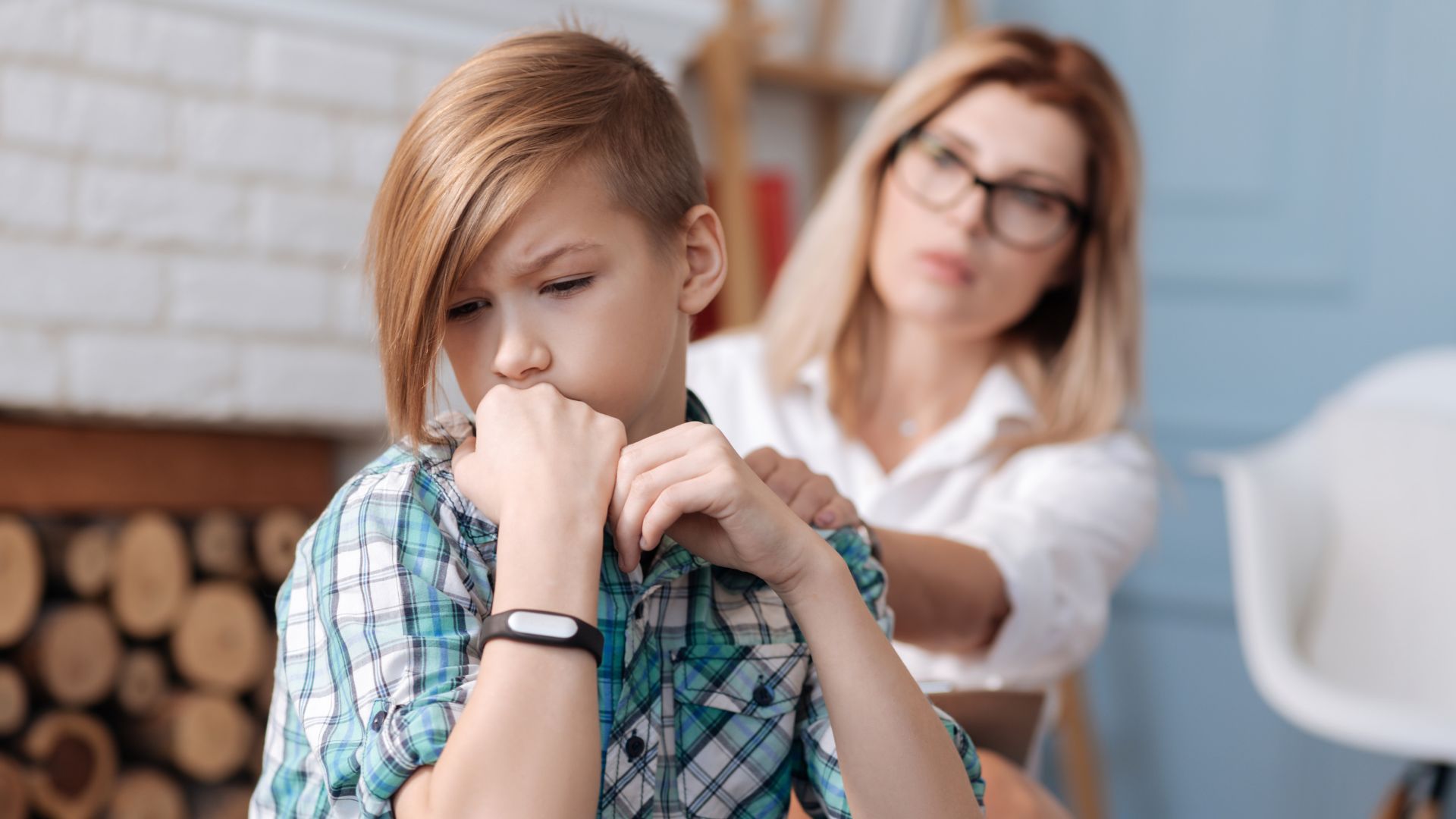Teenagers may engage in self-harm to cope with emotional pain that feels otherwise unbearable. Some adolescents injure themselves out of desperation, anger or to seek attention and show their hopelessness, according to the American Academy of Child & Adolescent Psychiatry (AACAP). It is crucial to remember that self-harm, or self-injury, is not a healthy or effective solution, but rather a sign of underlying distress. Healthcare professionals have seen an increase in self-harm among teens. Children who engage in self-harm increase the risk of developing borderline personality disorder, according to the AACAP. Providing support, understanding, and access to professional help can assist teens in finding healthier ways to navigate their emotions and cope with the challenges they face.
What is Self-harm?
Self-harm, or self-injury, is a behavior that is deliberate and results in injury to one’s own body. Self-harm can take various forms, such as cutting, burning, biting, scratching, or hitting oneself, often leaving bruises or scars. There are two forms of self-harm: suicidal self-injury (SSI), which refers to harming oneself with the intent to commit suicide, and non-suicidal self-injury (NSSI), which refers to harming oneself without the intent to commit suicide.
Most self-harming behavior falls under the non-suicidal self-injury umbrella. NSSI is an unhealthy way that teens may use to cope with negative emotions and stress. When experiencing distress, harming oneself serves as an effective, albeit destructive way to refocus the brain from emotional pain to physical pain.
In a 2005 study of high school students, 55% of those who engaged in self-injury indicated their reason for NSSI was, “to get my mind off my problems,” while 45% reasoned that, “It helped me to release tension or stress and relax.” The feeling of relief experienced after cutting, burning, or otherwise harming oneself further reinforces that behavior, sometimes leading to them doing it repeatedly.
Teenagers who engage in self-injurious behavior usually begin doing so between the ages of 12 and 14, a common period of difficulty due to the physical, emotional, and mental changes associated with puberty. Rates of NSSI in youth have increased dramatically in recent years, with 17% of teenagers engaging in this behavior at least once, according to the American Psychological Association.

What Are Self-Injurious Behaviors?
Self-harm is typically done in private and in a consistent manner, leaving a pattern or cluster of marks. Though it can be done anywhere on the body, it is most often done on the arms, legs, abdomen, or chest.
Examples of self-injurious behaviors include:
- biting
- branding
- breaking bones
- bruising
- burning
- carving
- cutting
- hitting
- picking and pulling skin or hair
- piercing
- scratching
- tattooing
Most individuals who self-harm attempt to hide it from those around them by wearing long sleeves and pants even in hot weather or by lying about the origin of injuries, attributing them to accidents. Teenagers engaging in NSSI may show other symptoms as well, such as behavioral and emotional instability or talk of feeling worthless or helpless.
Contributing Factors of Self-Harm in Teenagers
Self-harming behavior generally affects all genders equally; however, a 2023 study published by the American Academy of Pediatrics found that out of 1,098 children aged 5 to 18 studied over the course of four years, older female adolescents with a combination of anxiety, depression, substance and trauma disorders are at higher risk for self-harm. Furthermore, younger male adolescents with mood and developmental disorders were characterized as “very high risk” for self-harm.
Medical professionals at the Cleveland Clinic have stated that many mental health conditions are often linked to self-harm, including:
- anxiety
- autism
- bipolar disorder
- borderline personality disorder (BPD)
- conduct disorder
- depression
- dissociative identity disorder (DID) and dissociative amnesia
- eating disorders
- gender dysphoria
- intermittent explosive disorder
- obsessive compulsive disorder (OCD)
- post-traumatic stress disorder (PTSD)
- sleep disorders
- substance use disorders
Teenagers who have experienced previous abuse or trauma and those who do not identify as the sex they were assigned at birth, and those who identify with a sexual orientation other than heterosexual are also at a higher risk of self-harming, as are those whose friends engage in self-harm, according to the Mayo Clinic. External factors which may influence a teenager to begin self-harming include family problems, tumultuous relationships with friends or trouble in school.
Additionally, it is possible that the accessibility of the internet in today’s age may be associated with the rise in self-harm of teenagers, according to a study from researchers at the Leeds Institute of Health Sciences. With social media comes the potential for youth to experience worsened self-image issues as well as cyberbullying.

What Do You Say to a Child Who Self-Harms?
As a parent, finding out that your child is self-harming can be heartbreaking, and you may not know how best to approach such a sensitive subject with them. Before initiating the conversation, do your research to ensure you have a firm understanding of NSSI behaviors and the reason teenagers engage in it.
When speaking to a child who self-harms, it is best to do so gently to avoid making them feel judged or ashamed. Keep in mind that your child is not engaging in NSSI to hurt you, but in an effort to cope with their own struggles. This is an extremely difficult conversation for your child to have as well; they may feel embarrassed or guilty, and making accusations or using a negative tone can result in them shutting you out. Do your best to be sensitive to their pain and express your concern in a loving, considerate manner. Seeking the help of a trained mental health expert is highly recommended.
What Is the Best Treatment for Self-Harm?
Because self-harm in teenagers is an indicator of an underlying mental health condition such as anxiety and depression, treatment must get to the root of the problem in order to teach patients to employ healthy coping strategies for distressing situations instead of self-harming behaviors.
The first step in treating a self-harming teenager is to have a psychological evaluation performed by a mental health professional. This will allow the provider to determine the underlying cause the behavior as well as the best course of action going forward. Enrolling your teenager in some form of therapy is the most common and effective form of treatment. Both individual and group therapy are helpful tools in treating mental health conditions and reducing harmful behaviors.
Dialectical behavioral therapy (DBT) has proved to be effective in treating NSSI behaviors. DBT is an evidence-based, intensive form of talk therapy, also known as psychotherapy, developed to treat individuals who have difficulty regulating their emotions and help them form healthy strategies and methods for coping in stressful situations.
DBT has previously been adapted to treat adolescents with borderline personality disorder; however, its effectiveness in treating NSSI behaviors is still being studied. Nevertheless, it is still believed by healthcare professionals to be an extremely useful tool for youths engaging in NSSI behaviors, as it teaches them the skills and abilities necessary to cope with negative emotions in a healthy way rather than through self-harm.
Additionally, family members should be included in treatment of teenagers’ NSSI behavior. Options such as family therapy provide a safe space for the primary patient to share their thoughts and feelings as well as an opportunity for loved ones to listen and improve their own understanding of self-harm.
Getting Treatment for Teenagers Who Self-Harm
If your child is living with a mental health condition that causes them to self-harm, do not delay treatment. At Embrace U, adolescents and teens receive comprehensive, holistic care through therapy, education, peer support, skills training, and medication management. Call us today at (615) 703-3152 or visit one of our locations to learn more.




